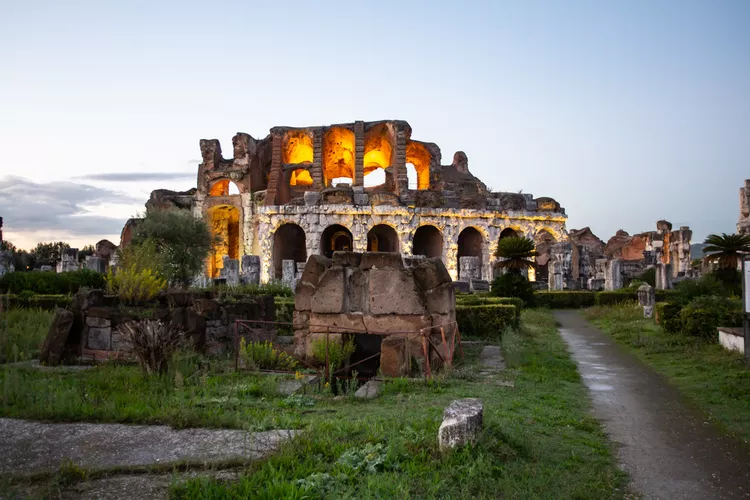Exploring Santa Maria Capua Vetere: A Journey Through Ancient Capua
Ancient Capua holds a significant place in Italian history, being home to Italy’s second largest amphitheater. Notably, it was within these walls that Spartacus ignited the Slave Revolt and Hannibal chose to winter in Capua in 215 BC, ultimately leading to the first Battle of Capua in 212 BC.
Tourists exploring this area are rewarded with remarkable sites, including the amphitheater, a gladiator museum, and a comprehensive archaeological museum. In addition, visitors can discover remnants of the ancient city, such as the frescoed Mithraeum. All of these sites can be efficiently visited within a single day with proper planning.
Santa Maria Capua Vetere: Ancient Capua and Spartacus
The historical significance of Capua is reflected in its extravagant lifestyle, which some believe contributed to the defeat of Hannibal. The opulence of ancient Capua is exemplified by its impressive amphitheater, which today ranks as Italy’s second largest after the Roman Coliseum.
Italian schoolchildren learn that the “fleshpots of Capua” softened the Carthaginian resolve, leading to their defeat by the rich Capuans. The city has left a legacy, evidenced by its grand amphitheater. ~ Capua Amphitheater.
Moreover, the region is tied to Giuseppe Garibaldi, who recruited 24,000 volunteers for the unification of Italy near Capua in October 1860.
For a more enriching experience, an overnight stay in the pleasant town is recommended, where one can enjoy dinner against the backdrop of the illuminated amphitheater.
It is important to note that the ancient remnants associated with Capua are primarily located in Santa Maria Capua Vetere, as modern maps designate it as the location of old Capua.
While the ruins here may not be as striking as Rome’s, the new gladiator museum offers invaluable insights into the historical significance of Capua during its peak.
Capua Roman Amphitheater
The amphitheater’s construction date remains uncertain, yet estimates suggest it was built approximately 100 years prior to Rome’s Coliseum. Much like its Roman counterpart, the amphitheater’s design showcases gates and ramps that can still be seen in contemporary sports venues.
Historical accounts state that the amphitheater could accommodate up to 100,000 spectators across four seating tiers. Although the current state of the arena floor may appear modest, it was originally designed to serve its purpose during ancient events.
Gladiator Museum, Capua
The Gladiator Museum, located at the amphitheater’s entrance, provides a deeper understanding of the historical context of gladiatorial games and their cultural impact. Visitors can explore various exhibits displaying gladiatorial weapons and learn about audience seating arrangements, enhancing their appreciation for this facet of ancient life.
Santa Maria Capua Vetere Tourism Information
A quick getaway to Santa Maria Capua Vetere yields a wealth of exploration opportunities. Besides the amphitheater, tourists can visit the archaeological museum, gladiator museum, and the ancient Mithraeum. Additionally, the nearby modern town of Capua features another archaeological site worth a brief visit.
Travelers seeking to further enrich their experience can explore the nearby Reggia di Caserta, an elegant 18th-century palace boasting grandeur reminiscent of the Palace of Versailles.
Getting to Santa Maria Capua Vetere
To reach Santa Maria Capua Vetere, a bus or train from Naples typically takes around 40 minutes. Some train routes also conveniently stop at Caserta. If interested, you can check the schedule and ticket prices from Naples to Santa Maria Capua Vetere.
Where to Stay and Eat
For a pleasant stay, consider the historic B&B Vico Mitreo 2, ideally located near the Mithraeum and Archaeological museum. This accommodation features an excellent breakfast and knowledgeable owners who can recommend local dining options. One must-try venue is the organic Spartacus Arena, offering outdoor seating with stunning views of the amphitheater. It is advisable to make reservations as the restaurant tends to fill up quickly after opening.





